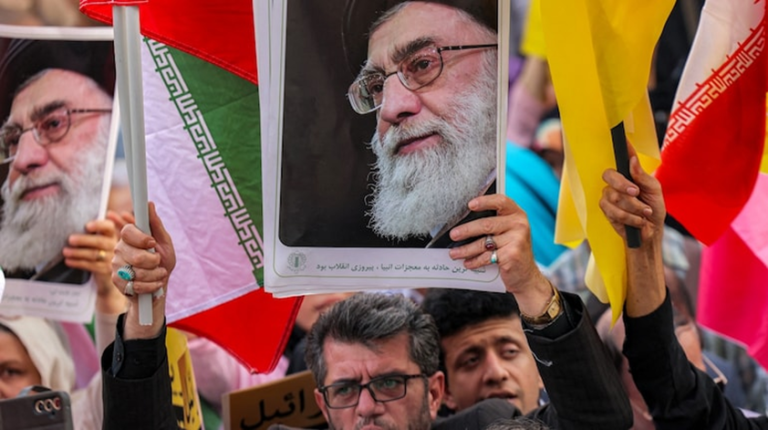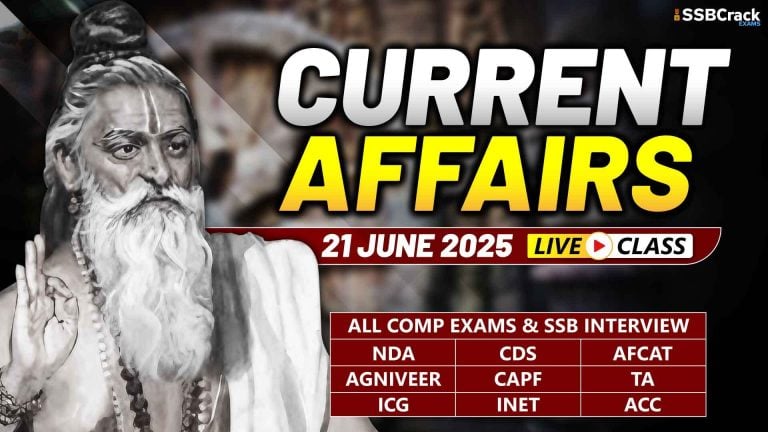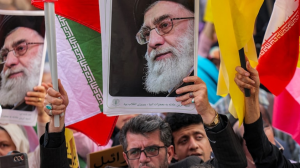25th Amendment of US Constitution
- The 25th Constitutional amendment lays out how a US President or a Vice President can be replaced or succeeded.
- It includes resolve issues revolving around unfortunate situations like death, resignation to removal of US President and actions to be followed after a President becomes disabled to such a degree that he is unable to fulfill his responsibilities.
- The 25th US Constitutional amendment was proposed in 1965 and was ratified by the states in 1967.
- The amendment has four sections.
- The vice president would assume the position and title of the president in the event of the resignation of the president which will effectively prevent the departing current from returning to office.
- The second section of the amendment includes provisions of vacancies in the office of vice president.
- The third section of the amendment provides provisions to determine that a city of presidents to discharge his powers and duties.
- The vice president can take over as acting president if the president declares his or her inability to act as president. When the president is unable to declare his or her incompetent then the fourth section of the amendment is invoked. This section requires the vice president and the cabinet to jointly prove the incompetence of the Vice-President.
- Currently, citizens and leaders of the United States of America or insisting vice president Pence to invoke this fourth section of the 25th Constitutional Amendment against President Trump.
Food Price Index of FAO
- The Food and Agriculture Organization has released the Food Price Index.
- The Food and Agriculture Organization calculates the food price index measuring the monthly changes of a basket of oilseeds, cereals, meat, dairy products and sugar.
- The food crisis of all the major categories increased for the seventh consecutive month barring sugar.
- For the year of 2020, the food price index was 97.9 point. This is a three-year high and 3.1 % increase as compared to that of 2019.
Key Highlights
- The food price index for the month of December was 100 7.5 points.
- The food price index for the month of November was 105.2.
- For the year of 2020, the food price index was 97.9 point. This is a three-year high and 3.1 % increase as compared to that of 2019.
- The historical peak of the food price index occurred in 2011.
Committee formed for Ladakh’s land, culture and language.
- The Government of India recently formed a committee to protect language, land, culture of Ladakh and ensure participation of citizens in the development of Union Territory.
- The Committee is to be headed by Minister of State for Home G Kishan Reddy.
- A ten-member delegation from Ladakh met Home Minister Amit Shah to express their concerns about the threat to the unique culture, language and demography of the region in the development process.
- Concerns have also been raised about the rights and demand for the inclusion in the sixth schedule.
- More than 90% of Ladakh population is tribal.
- Including Ladakh in the sixth schedule will help to enhance the transfer of funds for speedy development of the region.
What are the main provisions of Sixth Schedule?
- The Sixth Schedule has provisions for the administration of tribal areas in the states of Meghalaya, Assam, Tripura, and Mizoram.
- The sixth schedule has provisions for constitution of autonomous districts and councils to frame laws to protect interests of the tribal.
- The Sixth Schedule was constituted under Article 244.
- It currently holds provisions for the administration of tribal areas in Meghalaya, Assam, Tripura and Mizoram. It was passed by the Constituent Assembly in 1949. It seeks to safeguard the Autonomous District Councils.
Why should Ladakh be included in Sixth Schedule?
- More than 90% of Ladakh population is tribal. The primary Scheduled Tribes of Ladakh are Bot, Balti Beda, Brokpa, Changpa, Mon, Garra and Purigpa. Including Ladakh in the sixth schedule will help to enhance the transfer of funds for speedy development of the region.
India’s first double stack long-haul container train
- The Prime Minister Narendra Modi has flagged off the first double stack long-haul container train from New Ateli in Haryana to New Kishanganj in Rajasthan.
- The train is to be operated in the 360-km long Rewari-Madar Section of the Western Dedicated Freight Corridor.
- The train is 1.5 kilo metres long and It is hauled by Electric traction.
- The freight trains are operated at maximum speed of 75 kilometres per hour. The speed is to be increased to 100 km/hr.
- The Indian Railways operated Mission Sheeghra. Under the mission, the trains attained a maximum permissible speed of 100 km/hr.
What is Mission Sheeghra?
- The Indian Railways operated Mission Sheeghra in Uttar Pradesh. It was launched by the Lucknow Division of Indian Railways. Under the mission, the trains attained a maximum permissible speed of 100 km/hr.
What are Dedicated Freight Corridors?
- The Dedicated Freight Corridors are high speed high capacity railway corridors that are exclusively meant for transportation of freight.
- The Western Dedicated Freight Corridor is from Jawaharlal Nehru Port in Mumbai to Dadri on Uttar Pradesh.
- The eastern Freight Corridor connects Dakuni in West Bengal and Ludhiana in Punjab. The South-West Dedicated Freight Corridor connects Chennai and Goa.

Japan will launch world’s first wood based satellite
- To combat the problem of space junk Japan’s Sumitomo Forestry company and Kyoto University aims to launch the world’s first wood-based space satellite.
- The team is also working towards developing wooden materials extremely resistant to temperature changes and sunlight.
- The debris can travel at a speed of more than 22,300 mph and can impact other satellites.
- A Japanese astronaut and a professor at the Kyoto University, Takao Doi, told the BBC that all types of satellites that re-enter the Earth’s atmosphere gets burnt and release tiny alumina particles.
- Several space agencies, including NASA and ESA, are coming up with projects that could attempt to collect space debris in the future, with ESA planning to launch one such mission in 2025.
- While these appear to be curative measures, the project undertaken by Japan, being a preventive measure, seems to be a step in the right direction.
Shivalik Small Finance Bank receives license from RBI
- To carry on banking business as a Small Finance Bank (SFB) in India, the Shivalik Small Finance Bank (SSFB) announced the receipt of a license from Reserve Bank of India (RBI).
- Shivalik is the first and largest multi-state Urban Co-operative Bank in Uttar Pradesh and has been at the forefront of financial inclusion through a technology focussed approach.
- It is the First Urban Cooperative Bank in India to receive a commercial banking license under voluntary transition scheme.
- Suveer Kumar Gupta MD & CEO of Shivalik Mercantile Cooperative Bank.
- The key objectives of setting up of SFBs were for furthering financial inclusion by going through these factors:
- provision of savings vehicles primarily to unserved and underserved sections of the population, and
- supply of credit to small business units; small and marginal farmers; micro and small industries; and other unorganised sector entities, through high technology-low cost operations.
- A major focus of the SFBs will be to provide loans of small ticket sizes with a focus on sectors eligible for classification as priority sector lending (PSL) by RBI.
Sulphur Dioxide Emission Norms Delayed
- The Ministry of Power has proposed to postpone the deadline for coal-fired power plants to adopt the new emission standards, stating that an ” an unworkable time schedule” will burden utilities and cause a rise in power tariffs.
- India initially set a 2017 deadline for thermal power plants to comply with emission standards for installing Flue Gas Desulfurization (FGD) devices to reduce toxic sulphur dioxide emissions.
Flue Gas Desulphurisation (FED):
- Removal of sulphur dioxide is named as Flue-gas Desulphurization (FGD).
- Seek to remove gaseous pollutants viz. SO2 generated from exhaust flue gas generated in furnaces, boilers and other industrial processes due to thermal processing, treatment and combustion.
Proposal for the Ministry of Power:
- The plants in Region 2 can start taking action one year after the plants in Region 1.
- Currently, power plants located under Region 3, 4 and 5 do not need to take any measures.
- According to the Ministry, the target should be to take care of consistent ambient air quality across the country, and not uniform emission norms for thermal power plants.

Foundation Stone Laid for New Anubhava Mantapa
- The Chief Minister of Karnataka laid the foundation stone for the “New Anubhava Mantapa” of Basavakalyan.
- The project will show the 12th-century Anubhava Mantapa (“first parliament within the world”) established by him in Basavakalyan, where debates of philosophers and social reformers held.
- The building will adopt the Kalyana Chalukya architectural style.
- Basavanna spread social consciousness through his poems, popularly called Vachanaas.
Highlights:
- During the period of the Kalachuri-dynasty Bijjala king I in Karnataka, Basavanna was a philosopher, statesmen, Kannada poet and social reformer in the twelfth century.
- Basavanna spread social consciousness through his poems, popularly called Vachanaas.
- Basavanna rejects gender or social discrimination, superstition and rituals.
- He introduced new public institutions, such as Anubhava Mantapa (or the “hall of spiritual experience”), which welcomes men and women from all socioeconomic backgrounds to openly discuss spiritual and secular life issues.
- Basaveshwara was the first Kannadiga created to commemorate his social reforms.
- In November 2015, the Prime Minister of India held the unveiling ceremony of the Basaveshwara statue on the banks of the R.Thames in Lambeth, London.
Conflict Over Nile – Great Renaissance Dam
- The River Nile is the longest river in Africa. It is the middle of a decade-long complex dispute involving multiple countries that believe river waters.
- Ethiopia, Sudan, and Egypt recently agreed to resume negotiations to resolve a decade-long complex dispute over the hydropower project of the Great Renaissance Dam in the Horn of Africa.
- The 145-meter (475-foot-high) hydropower project initiated by Ethiopia was the cause of the conflict.
- Given the dam’s location on the Blue Nile tributary, it might allow Ethiopia to realize control of the flow of the river’s waters.
Highlights:
- Grand Renaissance Dam: The 145-meter (475-foot-high) hydropower project initiated by Ethiopia was the cause of the conflict. Given the dam’s location on the Blue Nile tributary, it might allow Ethiopia to realize control of the flow of the river’s waters. The River Blue Nile may be a tributary of the Nile, which carries about two-thirds of the river’s water and most of the silt. Ethiopia, Egypt and Sudan are the forefronts of this dispute.

- Ethiopia believes that the dam will generate approximately 6,000 megawatts of electricity and will support its industrial development. It can also export excess electricity to neighbouring areas to generate income.
- Egypt’s Concern: Egypt lies downstream and cares that Ethiopia’s control over the water could end in lower water levels within its own borders. About 97% of Egypt’s drinking water and irrigation supplies depend on the Nile. The dam will endanger the food, water security and livelihoods of ordinary Egyptian citizens.
- Sudan’s Stand: Sudan is also worried that if Ethiopia gains control of the river, it will affect the water level that Sudan obtains. Sudan may benefit from the electricity generated by the dam. Regulated river flow will save Sudan from severe flooding in August and September. Therefore, it proposed joint management of the dam.
QUICK REVIEW
- Which country’s 25th Constitutional amendment has been laid out?
- Pakistan
- Japan
- India
- USA
ANSWER: D
- For the year of 2020, the food price index was?
- 97.9 point
- 75.9 point
- 80.9 point
- 90.9 point
ANSWER: A
- The Government of India recently formed a committee to protect language, land, culture of Ladakh, who is the head of committee?
- G Satish Reddy
- G Kishan Reddy
- Ajay Gupta
- Deepak Kumar
ANSWER: B
- What is the length of the India’s first double stack long-haul container train?
- 10.5 km
- 1.5 km
- 2.5 km
- 8.6 km
ANSWER: B
- Which country will launch world’s first wood based satellite?
- USA
- India
- China
- Japan
ANSWER: D
- According to World Bank the Indian economy expected to contract by how many percent in 2020-21?
- 8.5 %
- 10.5%
- 9.6 %
- 9.4 %
ANSWER: C
- Which Bank has received the license from RBI?
- Karnataka Bank
- Dena Bank
- YES Bank
- Shivalik Small Finance Bank
ANSWER: D
- The Ministry of Power has proposed to postpone the deadline for which power plants to adopt the new emission standards?
- coal-fired power plants
- Hydroelectric power plants
- Diesel-fired power plants
- Solar power plants
ANSWER: A
- In which state the Foundation Stone Laid for New Anubhava Mantapa?
- Gujarat
- Maharashtra
- Goa
- Karnataka
ANSWER: D
- Over which river the Great Renaissance Dam is Conflicted?
- Chambal
- Brahmaputra
- Nile River
- Ganga
ANSWER: A





















1 thought on “Daily Current Affairs 08 – 11 January 2021 With Video Lecture”
Last question answer is C. Nile river